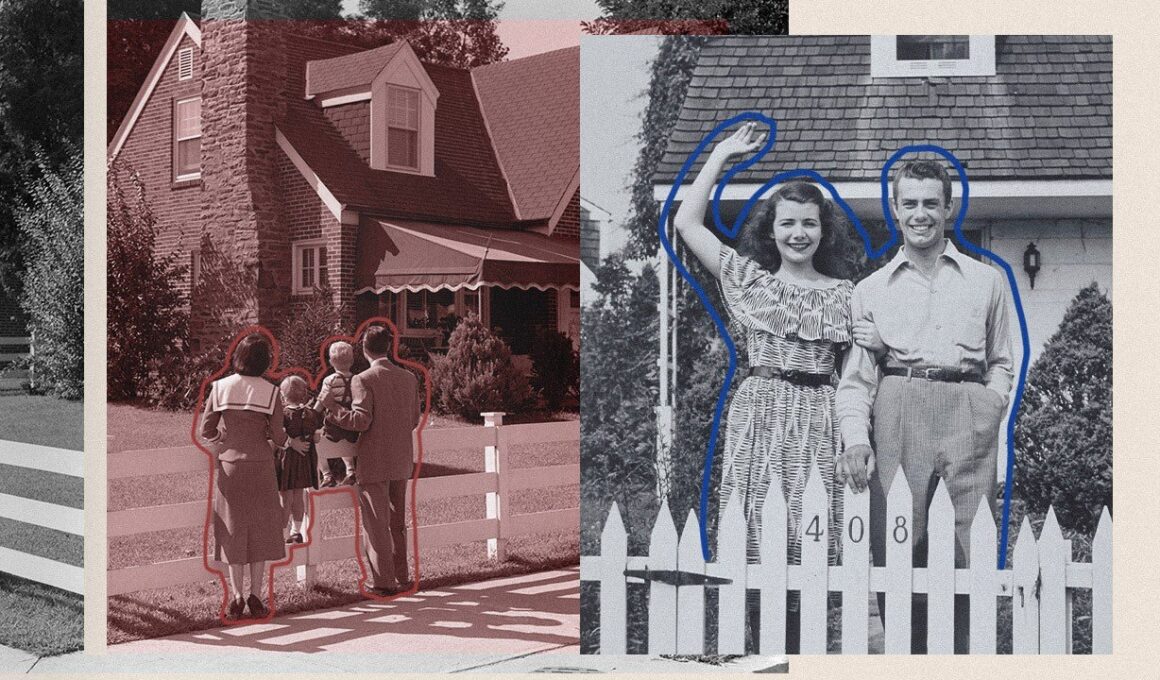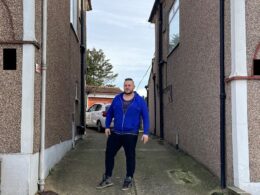Many Americans dream of buying a home where they can raise a family. But is it possible to actually afford a house and kids?
Raising children, after all, is expensive. So is buying a house. If budgets are tight, people might feel they can only cover one or the other—a painful tradeoff highlighted in a range of recent headlines suggesting that only DINKs (couples with Dual Incomes, No Kids) can afford to own property today.
But is this true? To find out, Realtor.com’s data team compared the price of buying a home to the price of raising a child. The goal was to identify the cost—and determine whether it’s affordable.
The cost of raising kids vs. buying a house
Today, the typical monthly housing payment—assuming a median listing price of $439,950, a mortgage rate of 6.73%, and a 20% down payment—comes in at around $2,300 per month.
The typical cost to raise a child is $1,450 a month, per kid—factoring the $17,400 annual cost of raising a child, based on a USDA estimate and adjusting for inflation.
In short, buying a house will run you about $850 more per month than raising a child.
And since DINKs aren’t funneling their earnings toward day care and other kid-related expenses, it stands to reason that they can more easily afford a house than parents with the same salary.

(Getty Images)
“Many households with two incomes and no children have more disposable income to spend how they choose,” says Realtor.com senior economist Hannah Jones. “In today’s high-priced housing market, having more cash to put toward housing is useful, whether that means spending more monthly or putting down a larger down payment.”
In fact, Jones’ analysis found that households without children, with that extra $1,450 per month not going to child care, “would allow for a home priced roughly $136,000 higher. That is, all else equal, buyers in the same housing market could purchase a $576,000 home if the $17,400 was used for monthly housing payments.”
Real estate agents agree that their DINK clients tend to have an easier time buying a house.
“All of our DINK clients have had great budgets for home buying,” says Cedric Stewart, a real estate agent at Keller Williams in Washington, DC. “One reason for that is the savings they’ve realized because they don’t have to pay for childcare. In the DC area, monthly childcare for one kiddo is the same cost as a small mortgage. You do the math.”
DINKs have more housing options
In addition to being able to afford a more expensive house, DINKs have more leeway in terms of where they live.
“Dual income, no-kid households may also need less space, which opens up more housing options, especially in dense, high-priced urban cores,” Jones points out.
“The hallmark of this group is more choices,” says Bruce Ailion, a real estate agent at Re/Max Town & Country in Atlanta, GA. “Sizes, areas, and prices that might be prohibitively expensive to a single homeowner or family with children open up to DINK buyers.”
Another big advantage for DINKs is not having to worry about being in a particular school district.

(Getty Images)
“We know that housing values are highly tied to school ratings,” Ailion says. “In my market of suburban Atlanta, the difference in price for identical homes in adjacent school districts can vary by 15%. DINKs can enjoy the same home for a significantly lower cost if they are not concerned about the school district.”
Sam Fitz-Simon, a real estate agent at Compass Real Estate in Danville, CA, adds, “For DINK clients, the priorities shift from being in proximity to good schools to being close to commuter routes and vibrant, walkable neighborhoods with restaurants and bars.”
Plus, with no kids to consider, DINKs can be selfish about their space. Without needing to use extra rooms for children’s bedrooms, the options are endless. Stewart confirms, “We’ve seen everything! Gyms, art studios, gaming rooms, DJ booths, and lots of offices.”
Fitz-Simon agrees, adding, “With DINKs, I have even seen an extra bedroom become a dog’s bedroom!”
DINKs value flexibility and freedom
Given all the reasons DINKs seem to have it easier in the homebuying department, you might be surprised to learn that DINKs are actually less likely to buy a home than couples who earn a dual income and have kids, according to a recent study from Rocket Mortgage.
This study found that 72% of dual-income households with kids in the U.S. own their homes, compared to 59% of dual-income households with no kids.
Why? The study found DINKs may prefer the freedom and flexibility of renting over buying. They can move more often since they don’t have to consider the impact that moving to a new home or city could have on a child’s schooling and social life, according to the study.
“I do believe it is generally easier for DINKs to move,” says Cara Ameer, a real estate agent at Coldwell Banker in California and Florida. “Some DINKs enjoy moving every couple of years because they get bored or like a change.”
The American Dream isn’t dead

(Getty Images)
Even given the state of today’s real estate market and the high price of raising a child, Stewart says, “I don’t believe the American Dream of buying a home is only for DINKs, because the data shows families are still actively pursuing it.”
Want proof? Just go to an open house.
“Every open house for a great home is filled with strollers and multigenerational attendees,” Stewart says. “Families are still buying in droves.”







